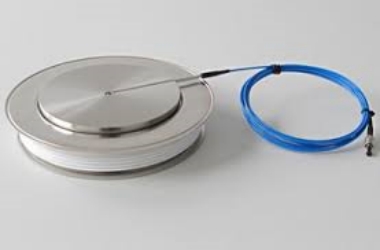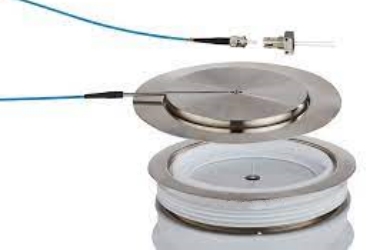Light-triggered thyristors: an important tool for improving energy efficiency
The light-triggered thyristor is a semiconductor-switching device with light-triggering characteristics. It has a light-triggering function that can trigger its conduction under the irradiation of external light. Such devices are of great value in specific application scenarios, such as switching elements in laser weapon systems and as carriers of synchronization signals in synchronization arresters. This characteristic gives light-triggered thyristors unique advantages in specific application scenarios.
Characteristics of light-triggered thyristors
1. Light-triggered conduction: The biggest characteristic of the light-triggered thyristor is that it can be triggered by external light irradiation to conduct. This makes it flexible in specific applications, such as a switching element in laser weapon systems or as a carrier of synchronization signals in synchronization arresters.
2. High voltage resistance and low conduction loss: Light-triggered thyristors usually have the characteristics of high voltage resistance and low conduction loss, making them widely used in high voltage and power transmission fields.
3. Fast response: Since the triggering mechanism of the light-triggered thyristor is based on light signals, it has the characteristics of fast response and can adapt to high-speed and high-frequency switching applications.

Light Triggered Thyristor has unique light-triggering characteristics, which makes it advantageous in some specific application scenarios.
The following are some application scenarios of light-triggered thyristors:
1. Laser weapon system: As a switching component, the light-triggered thyristor can control the emission of the laser. Its conduction is triggered by external light irradiation, thereby controlling the output of the laser.
2. Synchronous discharger: As a carrier of synchronization signals, light-triggered thyristors can ensure the synchronous operation of multiple devices. Its conduction is triggered by external light irradiation, thereby generating synchronization signals to achieve synchronous control of multiple devices.
3. Optical communication: In optical communication systems, light-triggered thyristors can be used to modulate and demodulate optical signals to achieve information transmission and processing.
4. Lidar: Lidar is a radar system that uses laser beams to detect the position, speed, and other parameters of a target. Light-triggered thyristors can be used to control the emission and reception of laser beams to achieve precise detection and identification of targets.
5. Photoelectric detection: In the field of photoelectric detection, light-triggered thyristors can be used to control the exposure time of the photodetector, thereby achieving image collection and processing.
In addition, light-triggered thyristors can also be used in solar panel control, industrial automation, and other fields. With the continuous development of technology and the growth of application requirements, the application prospects of light-triggered thyristors will become more extensive.

Light-triggered thyristors are an important tool for improving energy efficiency.
1. Optimize photovoltaic system operation: In photovoltaic power generation systems, light-triggered thyristors can accurately control the charging and discharging process of the battery panel to avoid the impact of overcharge and over-discharge on battery life. By optimizing the charging and discharging control of the panel, the energy utilization efficiency of the panel can be improved, the service life of the panel can be extended, and the energy efficiency of the entire photovoltaic system can be improved.
2. Achieve energy-saving control: Light-triggered thyristors can be used to control the operating status of various power equipment to achieve energy-saving control. For example, in public facilities such as street lamps and billboards, light-triggered thyristors can automatically control the brightness and switching time of lights according to the intensity of ambient light, thereby achieving energy-saving control. In industrial production, light-triggered thyristors can be used to control the operating status of various equipment to achieve rational utilization of energy and energy conservation and emission reduction.
3. Improve the operating efficiency of power equipment: The light-triggered thyristor has the characteristics of fast response and low conduction loss, which can improve the operating efficiency of power equipment. For example, in motor control, light-triggered thyristors can be used to control the starting and stopping of motors to achieve fast response and high-efficiency operation of the motor. In power transmission systems, light-triggered thyristors can be used to control the transmission speed and power of current and improve the stability and efficiency of power transmission.
The light-triggered thyristor is a semiconductor switching device with unique light-triggered characteristics and is suitable for specific application scenarios. It has the advantages of high withstand voltage, low conduction loss, and fast response, but it also faces challenges in manufacturing quality control, light source selection, circuit protection, etc. By understanding its working principle, application scenarios, and reliability improvement measures, we can better utilize the advantages of light-triggered thyristors and provide more efficient and reliable solutions for specific application scenarios.
